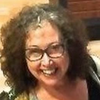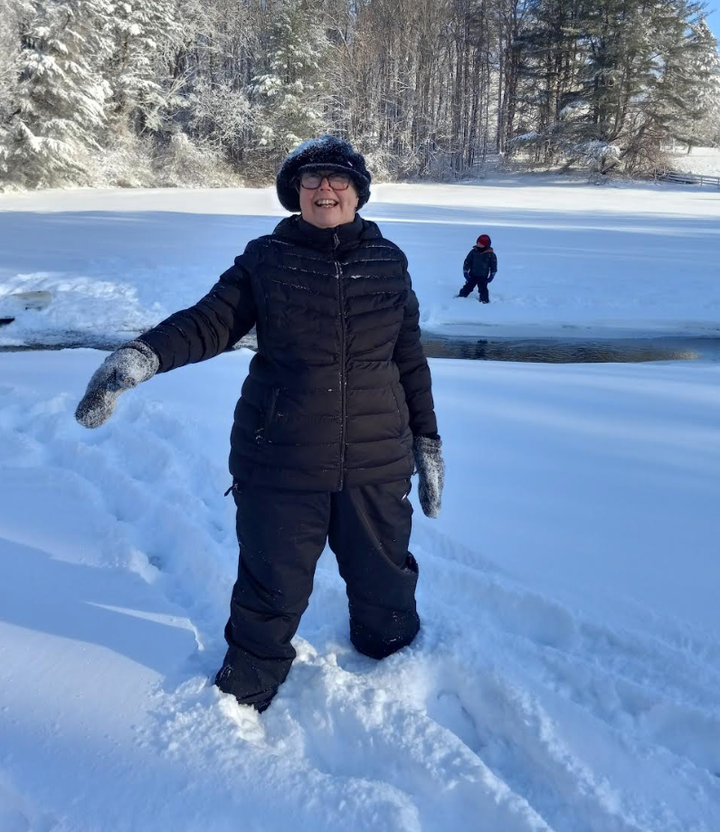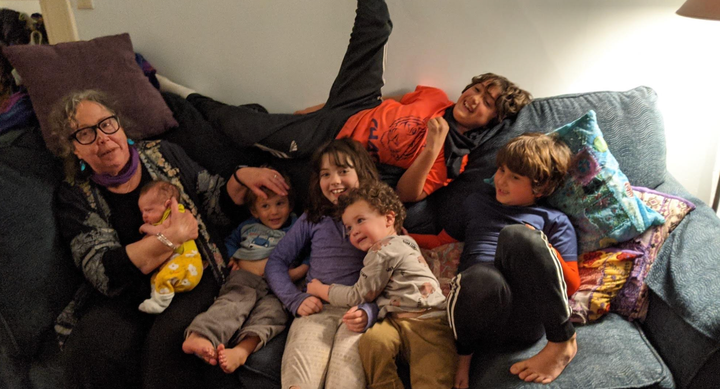Andrew B. Newberg
Andrew Newberg | |
|---|---|
| Born | 1966 |
| Citizenship | American |
| Education | Haverford College (B.A.) University of Pennsylvania (M.D.) |
| Scientific career | |
| Fields | Neuroscience, neurotheology, psychiatry, internal medicine, radiology, neuroimaging, religious studies |
| Institutions | University of Pennsylvania Thomas Jefferson University |
Andrew Newberg is an American neuroscientist who is a professor in the Department of Integrative Medicine and Nutritional Sciences and the director of research at the Marcus Institute of Integrative Health at Thomas Jefferson University Hospital,[1] previously an adjunct professor of religious studies and a lecturer in psychology in the Biological Basis of Behavior Program at the University of Pennsylvania.[2]
He has been a prominent researcher in the field of nuclear medical brain imaging and neurotheology. In particular, his research has focused on the development of neurotransmitter tracers for the evaluation of religiosity as well as neurological and psychiatric disorders including clinical depression, head injury, Alzheimer's disease, and Parkinson's disease.
His 2010 book Principles of Neurotheology gives a basic understanding on the research done so far on neurotheology.
Biography[edit]
Newberg graduated from Haverford College in 1988 with a degree in chemistry and then received his medical degree in 1993 from the University of Pennsylvania. He then completed postgraduate training in Internal Medicine with a Residency at the Graduate Hospital from 1993 to 1996, and then did a Fellowship in Nuclear Medicine at the University of Pennsylvania Department of Radiology from 1996 to 1998. He was certified in Internal Medicine by the American Board of Internal Medicine in 1997 and certified in Nuclear Medicine by the American Board of Nuclear Medicine in 1998.
Because of his work in the intersection between religion and the brain, he was an adjunct assistant professor in the Department of Religious Studies at the University of Pennsylvania. From 2005 to 2010 he was also the Director of the Center for Spirituality and the Mind. Newberg also teaches a neuroimaging course in the Biological Basis of Behavior Program.
Academic research[edit]
In the early 1990s, he began to research the intersection between the brain and religious and spiritual experiences. In this work, also sometimes referred to as "neurotheology", Newberg described the possible neurophysiological mechanisms associated with religious and spiritual experiences.[3] His initial research included the use of functional brain imaging to study Buddhist meditators[4] and Franciscan nuns in prayer.[5] He has continued to study religious and spiritual phenomena including topics related to forgiveness, meditation, prayer, spiritual development, morality, and belief. This work has been incorporated more recently into a new Center for Spirituality and the Mind at the University of Pennsylvania.[6]
Literary activities[edit]
Newberg is the author of ten books (translated into 16 languages), and over 200 articles on neuroimaging in neuropsychiatric disorders and also on neuroscience and religion. His book, Why God Won't Go Away, is a popularized account of this topic which describes some of the brain imaging studies and his theories regarding the nature of religious and spiritual experiences. Why We Believe What We Believe, co-authored with Mark Robert Waldman (Executive MBA Faculty, Loyola Marymount University) describes the relationship between the brain and beliefs and also describes brain imaging studies of an atheist and individuals speaking in tongues (or glossolalia).[7] A more recent book, How Enlightenment Changes Your Brain, also co-authored with Waldman, is a scientific and practical look at how faith and meditation can enhance brain function. Steering away from the topic of faith, his latest book, co-authored with Mark Waldman, Words Can Change Your Brain describes how a research-based communication practice, "compassionate communication", can be used to improve brain health and interpersonal communication. The book and communication strategies are now part of the NeuroLeadership course offered in the EMBA program at Loyola Marymount University. The communication strategies have been documented and published in the Journal of Executive Education.[8]
Media appearances[edit]
Newberg's research has been featured in Newsweek, the Los Angeles Times, and the New Scientist. He has been a guest speaker at the Forum at Grace Cathedral[9] and appeared in the films What the Bleep Do We Know!? and Religulous. He has appeared on Dr. Oz, StarTalk with Neil deGrasse Tyson, Good Morning America, Nightline, 20/20, CNN, ABC World News Tonight, as well as in the movie Awake: The Life of Yogananda. His work has been featured in a number of major media articles including in Time, National Geographic, Discover, New York Times, Popular Mechanics, O Magazine, London Observer, Philadelphia Inquirer, and Reader's Digest.
Reception[edit]
From the religious perspective, concerns have been raised that the study of practices such as meditation does not necessarily extrapolate to the broader array of religious and spiritual phenomena.[3] Newberg tends to agree with this concern and has argued that future studies are needed to elucidate the more complex elements of religious and spiritual phenomena. Newberg has maintained that science and brain imaging studies are only tools to evaluate the brain during such experiences but do not necessarily negate such experiences. Newberg has argued that the integration of science and religion is critical for a better understanding of how human beings think and behave in a global context.
Works[edit]
- d'Aquili, Eugene G.; Newberg, Andrew B. (August 1, 2010). Principles of Neurotheology (paperback). Ashgate. ISBN 978-0-7546-6994-4.
- d'Aquili, Eugene G.; Newberg, Andrew B. (August 1, 1999). The Mystical Mind: Probing the Biology of Religious Experience (paperback). Fortress Press. ISBN 978-0-8006-3163-5.
- Newberg, Andrew B.; d'Aquili, Eugene G.; Rause, Vince (March 1, 2002). Why God Won't Go Away: Brain Science and the Biology of Belief (paperback). Ballantine Books. ISBN 978-0-345-44034-1.
- Newberg, Andrew B.; Waldman, Mark Robert (September 12, 2006). Why We Believe What We Believe: Our Biological Need for Meaning, Spirituality, and Truth (hardcover). Free Press. ISBN 978-0-7432-7497-5.
- Newberg, Andrew B.; Waldman, Mark Robert (March 24, 2009). How God Changes Your Brain: Breakthrough Findings from a Leading Neuroscientist (hardcover). Ballantine Books. ISBN 978-0-345-50341-1.
- Newberg, Andrew (2010). Principles of Neurotheology. Farnham, Surrey, England: Ashgate Publishing. ISBN 978-1-4094-0810-9.
- Newberg, Andrew B.; Waldman, Mark Robert (July 14, 2012). Words Can Change Your Brain: 12 Conversation Strategies to Build Trust, Resolve Conflict, and Increase Intimacy (hardcover). Hudson Street Press. ISBN 978-1-594-63090-3.
- Newberg, Andrew B.; Waldman, Mark Robert (March 15, 2016). How Enlightenment Changes Your Brain: The New Science of Transformation (hardcover). Avery. ISBN 978-1594633454.
- Newberg, Andrew B. (March 27, 2018). Neurotheology: How Science Can Enlighten Us About Spirituality (hardcover). Columbia University Press. ISBN 978-0231179041.
- Newberg, Andrew B.; Halpern, David (October 23, 2018). Words The Rabbi's Brain: Mystics, Moderns and the Science of Jewish Thinking (hardcover). Turner. ISBN 978-1683367130.
References[edit]
- ^ Jefferson University Physician Profile. "[1]", Jefferson University Physician Profile, 2016-08-29.
- ^ Staff/Faculty. "[2]", Perelman School of Medicine at the University of Pennsylvania Staff/Faculty, 2016-08-29.
- ^ a b Begley, Sharon. "Religion And The Brain", Newsweek, 2001-05-07.
- ^ Newberg AB, Alavi A, Baime M, Pourdehnad M, Santanna J, d'Aquili EG. The measurement of regional cerebral blood flow during the complex cognitive task of meditation: A preliminary SPECT study. Psychiatry Research: Neuroimaging 106: 113-122, 2001.
- ^ Newberg A, Pourdehnad M, Alavi A, d'Aquili E. Cerebral blood flow during meditative prayer: Preliminary findings and methodological issues. Perceptual and Motor Skills 97: 625-630, 2003.
- ^ "New Center for Spirituality and the Mind at Penn Unites Intellectual Resources" Newswise (April 25, 2006).
- ^ "Tongues on the Mind". Science (November 10, 2006).
- ^ Manning, Chris; Waldman, Mark; Lindsey, William; Newberg, Andrew; Cotter-Lockard, Dorianne (30 July 2013). "Personal Inner Values – A Key to Effective Face-to-Face Business Communication". Journal of Executive Education. 11 (1).
- ^ Newberg, Andrew; Herzfeld, Noreen; McConnell, Sean (2011-05-06). "God in Our Minds?". Grace Cathedral. Archived from the original on 2008-01-29. (Includes RealAudio links).
External links[edit]
- AndrewNewberg.com - official site
- Andrew B. Newberg at IMDb





